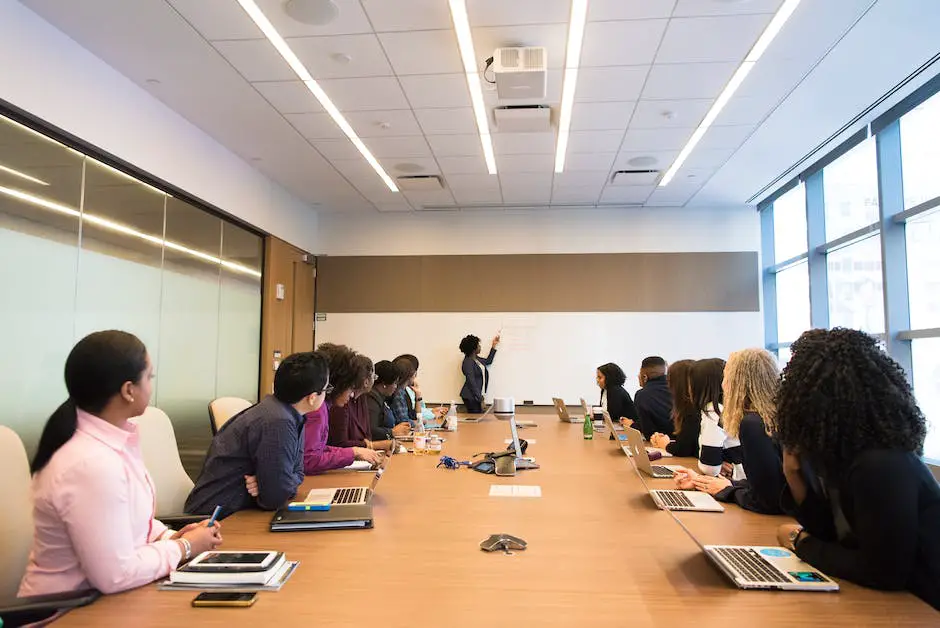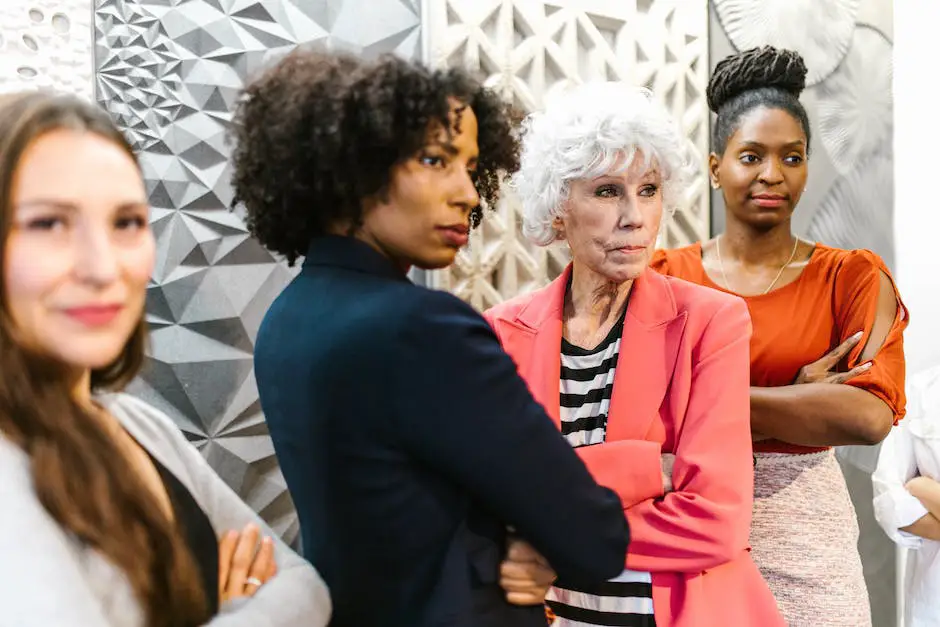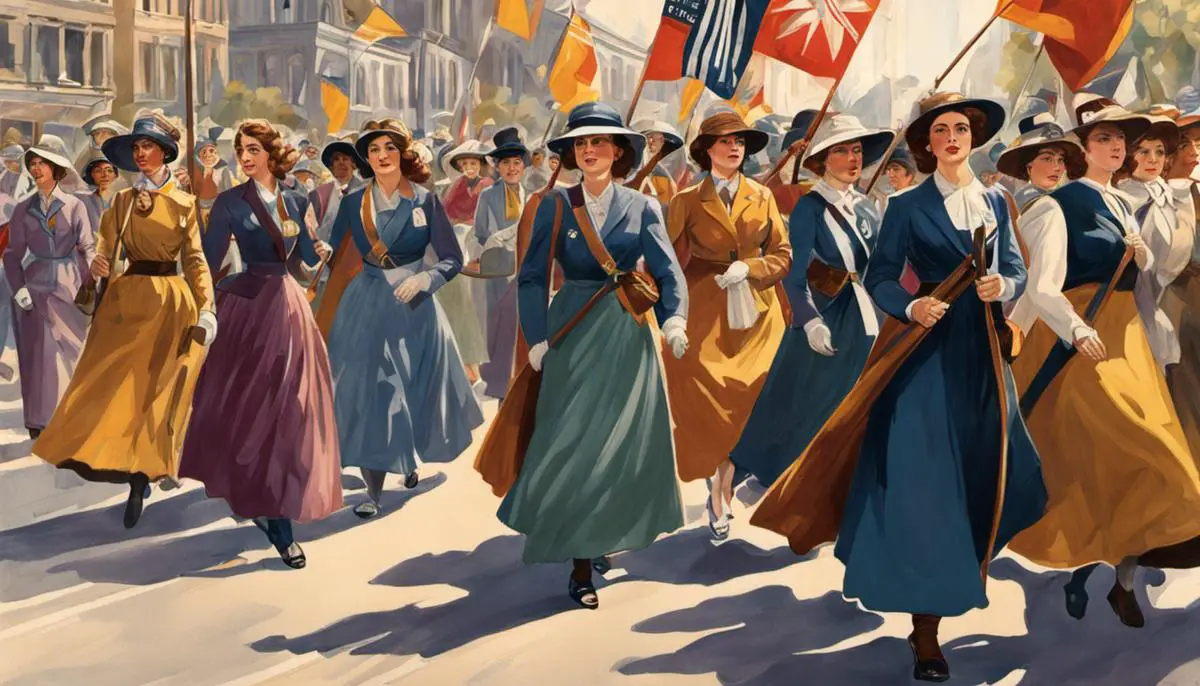On the canvas of human history, one thread that weaves through from subtle undertones to vibrant brush strokes is Women’s Empowerment. Fueled by the triumphs, struggles, and resilience of women the world over, it is a narrative that continues to define our collective humanity. Over the years, women’s empowerment has transitioned from mere rhetoric to concrete action, fueling significant social and political change. This exploration delves into the historical context of women’s empowerment, maps out its current challenges and achievements, and peeks into the circuits and cogs of successful strategies for further advancement. Additionally, it looks at the critical role of education and skill development that serves as the stepping stone to economic independence and self-reliance for women. The lens through which this journey unfolds spans far beyond the purely numerical aspect, to bring into focus the stories of inspiring women, swells of societal transformation, and frameworks that pave the way for gender equality.
Historical Overview of Women’s Empowerment
The Roots of Women’s Empowerment in the U.S.
In the United States, women’s empowerment began gaining notable attention during the 19th century, linked heavily to the women’s suffrage movement. Spearheaded by figures such as Elizabeth Cady Stanton and Susan B. Anthony, the movement aimed to challenge the existing patriarchal structures and give women the right to vote. Crucial events of this timeline include the Seneca Falls Convention in 1848, which is often hailed as the birthplace of American feminism, where the Declaration of Sentiments was established, calling for legal and social equality for women.
The Turn of the 20th Century
At the turn of the 20th century, progressive reforms brought more women into the labor force, giving them an unprecedented level of economic independence. During World War I and II, women actively participated in war efforts, replacing men in factories and offices, which dramatically changed the perception of women’s abilities and societal roles. In 1920, women’s continual fight for rights culminated in the passage of the 19th amendment, granting women the right to vote throughout the country.
The Second Wave Feminism and Civil Rights Era
The post-war period sowed the seeds for second-wave feminism in the 1960s. Major attention was given to a wider range of issues such as sexuality, family, workplace, and reproductive rights. Key figures like Betty Friedan and Gloria Steinem sought to challenge societal norms further. The Civil Rights Act of 1964, which prohibited sex discrimination in employment, and the establishment of the National Organization of Women in 1966 were notable advancements during this period.
The Third Wave: From the 1990s onwards
From the 1990s, the third wave of feminism and women’s empowerment came into being with an emphasis on individualism and diversity. Issues such as intersectionality and LGBTQ rights were brought to light during this period, viewed as a direct response to the perceived failures of the second wave. The movement today continues to evolve, dealing with a range of issues from equal pay and education rights to freedom from violence and the right to choose.
Women’s Empowerment Today
In the 21st century, amidst onward strides and backlash, women’s empowerment has emerged as a significant societal and political issue. The #MeToo movement, initiated in 2017, demonstrated the magnitude of sexual harassment and assault in society, drawing worldwide attention to gender disparity issues. The fight for equal representation, pay equity, reproductive and health rights continues, even as more women are breaking into politics and corporate leadership.
Examining the journey of women’s empowerment reveals a history rich with struggles and continuous transformations. It’s significant to comprehend this journey to effectively shape policies and influence societal changes concerning gender equality. Gaining an understanding of the historical aspects of women’s empowerment allows for a comprehensive view of its progression and trajectory.

Current Status and Challenges of Women’s Empowerment
Delving into Women’s Empowerment and Progress to Date
Often contemporary women are labeled as “empowered and independent.” However, a detailed examination of societal systems worldwide uncovers enduring differences which stand as roadblocks to genuine women’s empowerment. Thus, “women’s empowerment” is fundamentally described as a process through which women obtain power and control over their own lives, along with the capacity to make strategic life decisions.
Gender Disparity in Education
In 2021, the World Bank reported a significant gender gap in education worldwide. Girls often have lesser access to education than boys, and in some parts of the world, education for girls is considered unnecessary. The United Nations Educational, Scientific and Cultural Organization (UNESCO) estimate that 132 million girls around the world are out of school, including 34.3 million of primary school age, 30 million of lower-secondary school age, and 67.4 million of upper-secondary school age.
Workplace Inequalities
The workforce remains staggeringly unequal when it comes to gender. According to the Women in the Workplace 2020 report, for every 100 men promoted to a managerial position, only 85 women were promoted. The gap was even larger for women of color, with only 58 Black women and 71 Latinas promoted for every 100 men. Additionally, the gender pay-gap prevails; in the US, women were earning only 82 cents for every dollar earned by men, as of 2019.
Legal Rights and Societal Norms Circumscribing Women’s Empowerment
While the legal framework in many nations has improved to promote women’s equity, societal norms often lag behind. Women may legally have the right to own property and vote, but they may still be expected to fulfill traditional roles associated with housekeeping and child-rearing, limiting their time, energy, and resources for learning, working, or becoming politically active.
In several countries, women’s legal rights to inherit or own property are restricted. In an estimated 40 countries, daughters are not granted the same inheritance rights as sons, which can often lead to economic insecurity for women. Additionally, women often face legal discrimination in the form of gender-based violence laws, with 45 countries lacking legislation on domestic violence as of 2020, according to UN Women.
Challenges in Achieving Full Gender Equality
The journey towards women’s empowerment and full gender equality poses multiple challenges. The deeply ingrained prejudice and gender stereotypes continue to sidestep women in favor of men, particularly in leadership roles. Many societies still view men as primary breadwinners and women as primary caregivers, which forms the basis of many inequities at work and personal life.
Added on to these are the issues of violence against women, lack of access to reproductive rights, forced marriage, and lack of access to critical social services. The COVID-19 pandemic has further exacerbated gender disparities, especially for women of color, women with low incomes, and those living in developing nations.
Women’s Empowerment: A Journey of Progress and Persistence
Women’s empowerment has seen notable advancements over recent times, despite facing numerous challenges. From achieving greater representation in leadership to sharing domestic duties more equitably, progress is palpable. However, the path to absolute equality is still under construction and requires us to ingeniously challenge and eventually overhaul deep-rooted societal and cultural norms. This shift relies heavily on both legislative support and grassroots activism, which encourage further development in this field. The road to complete gender equality is indeed challenging but it becomes increasingly achievable through collective global efforts.

Successful Strategies for Women’s Empowerment
Educational Initiatives: Paving the Way to Gender Equality
One of the strongest tools in combatting gender inequality and promoting women’s empowerment has been education. Educational initiatives aimed at boosting women’s literacy rates, and vocational skillsets have shown impressive results across various societies. Countries such as Sri Lanka, Botswana, and Cuba, which heavily invest in women’s education, stand as great examples in this regard. They boast high literacy rates and school enrollment figures for women. These nations have shown us that when women and girls are provided with quality education, they not only develop their skills, but also become aware of their rights. Such education equips them to find respectable jobs and become contributive members of their communities.
Establishment of Policies and Legislation
Creating supportive legal frameworks that uphold gender equality and protect women’s rights is another successful strategy in women’s empowerment. In countries like Rwanda and Sweden, the constitution recognizes gender equality, providing clearer pathways for women’s political participation. For instance, Rwanda has one of the world’s highest representations of women in parliament, owed primarily to specific legislation enacted to correct historic gender biases.
Economic Empowerment through Entrepreneurship and Access to Credit
Policies and programs that focus on economic empowerment have also been remarkably successful. Providing microcredit support and training for women entrepreneurs has empowered many women in developing countries like Bangladesh, where organizations like Grameen Bank have reshaped traditional economic roles and brought financial independence to millions of women. Similarly in the United States, there are several initiatives like the Small Business Administration’s Women’s Business Centers that work to level the economic playing field by helping women start and grow their businesses.
Promoting Women’s Participation in Politics and Decision-Making
Efforts at improving women’s participation in political and decision-making processes have also proven successful in empowering women. The United Nations’ HeForShe campaign has been significant in engaging men and boys in ending gender inequality. Moreover, quotas mandating a minimum representation of women in parliament, like in Rwanda, have proven effective in increasing women’s participation in politics.
Social Mobilization and Grassroot Movements
Grassroots movements and social mobilization strategies have also shown great effectivity in promoting women’s rights and empowerment. The #MeToo movement, which originated in the United States, is an example of a successful social campaign that has seen global resonance. It has helped in promoting dialogue concerning sexual harassment and abuse, inspiring legislative change in multiple countries.
Use of Technology for Women’s Empowerment
Additionally, technology has emerged as a useful tool for empowering women. Internet connectivity and mobile applications provide educational resources, health information, and platforms for networking and business. M-Pesa in Kenya and Bima in Ghana are examples of mobile services empowering women economically by providing basic banking and insurance services.
Various strategies have been put forth to address the different aspects of women’s empowerment. These suggest that effective empowerment lies in the investment made on multiple fronts – policy, societal, and at an individual level. Empowering women, in order to effect gender equality, therefore requires a coordinated effort at all these levels.

Role of Education and Skill Development in Women’s Empowerment
The Influence of Education on Women’s Empowerment
Education emerges as a pivotal component in the drive towards women’s empowerment. By equipping women with necessary knowledge, skills, and self-assurance, it empowers them to make significant contributions to societal development. Over four decades of research support the connection between a woman’s education and her empowerment – education catalyzes her ability to take advantage of opportunities, challenge traditional norms, and transform her life.
Women with access to education are more inclined to engage in political discourse, attend meetings, and participate in decision-making processes. This leads to a more equitable representation in political spheres. An education enhances their comprehension of their rights, empowering them to stand up for these rights.
Moreover, education significantly improves women’s health and wellbeing, economic independence, and their ability to cope with environmental risks. Women with education tend to get married at an older age, have fewer but healthier and well-educated children. Further, they have less risk of dying during childbirth, are more likely to ensure their children receive an education, and are better prepared to shield themselves and their children from issues such as malnutrition, HIV/AIDS, trafficking, and sexual exploitation.
Skill Development and Women’s Empowerment
Alongside formal education, skill development programs are critical for women’s empowerment. Vocational and technical training, also known as TVET, can provide women with practical skills, knowledge and attitudes necessary for employment or self-employment. In many developing countries where traditional gender roles prevail, TVET for women promotes gender parity by offering women and young girls the opportunity to enter occupational fields traditionally dominated by men.
Skills development can also enhance women’s participation in decision-making at home and in the community, shift the perception of a woman’s role within the family to include productive work alongside reproductive roles, increase their economic independence and improve their social status.
Beyond technical skills, non-formal education programs can also provide life skills that enhance women’s confidence and agency. Some examples of these life skills include communication and negotiation, leadership and decision-making, critical and creative thinking, coping with stress and emotions, etc.
Quality Education and Skill Development Programs for Women
Creating equal opportunities for women to access quality education and skill development programs has always been a challenging task. Various social and economic disadvantages, traditional norms, violence, early motherhood and marriage along with discriminatory practices often deny access to quality education for women, especially those from marginalized groups.
Both policy interventions and community measures are vitally important in overcoming these challenges. Implementing policies that promote gender equality in education, setting minimum requirements for girls’ education, endorsing a safe and conducive learning atmosphere, and providing financial incentives to keep girls in school along with adult literacy programs can all help in ensure women’s educational rights.
Through coordinated efforts including government officials, civil society, and global allies, we can give women and young girls the opportunity to empower themselves through education and skill training. Achieving this is not only a moral obligation but also a developmental one, as societies with empowered women have consistently demonstrated to be more prosperous and harmonious.

The Future of Women’s Empowerment
Shaping Individual Attitudes for Women’s Empowerment: A Look into the Future
True empowerment depends heavily on individual attitudes and beliefs. Therefore, shaping these perspectives forms a crucial part of the future of women’s empowerment. We need to start promoting self-confidence, self-esteem, assertiveness among girls right from their childhood. It is also expected that future school curriculums will be more gender-inclusive and feature empowerment-themed topics, training and workshops to educate about women’s rights, their unique potential and abilities. The aim is to dispel gender stereotypes and create an environment where girls can dream limitlessly, chase their goals, and understand that they can make their own unique contributions to our world.
The Role of Society in the Future of Women’s Empowerment
Additionally, societal norms and attitudes that reinforce gender discrimination and female subordination need to be deconstructed. Communities around the world are leaning more towards promoting gender equality through various methods. The expectation is to witness more advocacy forums and public awareness campaigns that reject gender stereotypes and advocate for equal rights and opportunities. Communities might embrace projects designed to change traditional norms, such as encouraging men to share domestic tasks and dismantle the harmful norms of toxic masculinity.
Institutions and the Future of Women’s Empowerment
The institutional changes required for the future of women’s empowerment involve legislation adjustments, policy reforms, and changes in workplace culture. It is anticipated that more laws will be enacted globally, ensuring women’s involvement in decision-making processes on all levels, from local communities to internationals summits. Also, to tackle gender wage gap and female under-representation in leadership roles, workplace policies are expected to keep pushing for equal pay, flexible working hours, maternity leave, and efforts to retain women after childbirth.
In the academic arena, institutions are likely to offer more scholarships and funding for girls, particularly in fields where they are underrepresented, such as STEM. Universities may also introduce mentorship programs aimed at providing female students with role models in their chosen fields.
Steps Towards Achieving Women’s Empowerment Goals
Steps towards achieving these goals encompass several key areas. At a macro level, enacting pro-women policies, international cooperation, and securing financial resources dedicated to women’s empowerment is a priority. On a micro level, it involves education and attitude adjustments, commencing with family values and school curriculums.
Media also plays a pivotal role in promoting gender equality. Through films, books, and advertisements that challenge gender stereotypes and feature strong, aspirational female figures, the media could help reshape perception and social norms around gender roles.
In the corporate world, achieving gender equality requires further nurturing of women entrepreneurship and leadership, through measures such as equal pay, equitable access to professional development opportunities, and the provision of a safe and inclusive work environment.
Lastly, achieving full gender equality is a journey involving everyone— men, women, and non-binary individuals. It demands shared responsibility and collaboration. Everyone has a part to play, from speaking up against day-to-day biases and sexism to supporting policies and initiatives that promote women’s rights and equality.

Indeed, Women’s Empowerment is not monolithic, but a dynamic, ever-evolving enigma that is reshaping societies and economies. It’s an intricate, multilayered mosaic that requires meticulous assembly. As we stride into the future, we must not only learn from the historical plenty but continue embracing and transcending present challenges. Actionable strategies for women’s empowerment must persist so that our societies can continue to deepen their capacity for inclusivity and progress. Our collective commitment must be an all-encompassing embrace of education, skill development, and economic independence for women. As the world continues to evolve, our shared narrative should echo the journey of women’s empowerment as an integral force propelling societies forward. Only then can we truly say that the canvas of human history portrays stories not merely of survival, but of resurgence, resilience, and emancipation.

